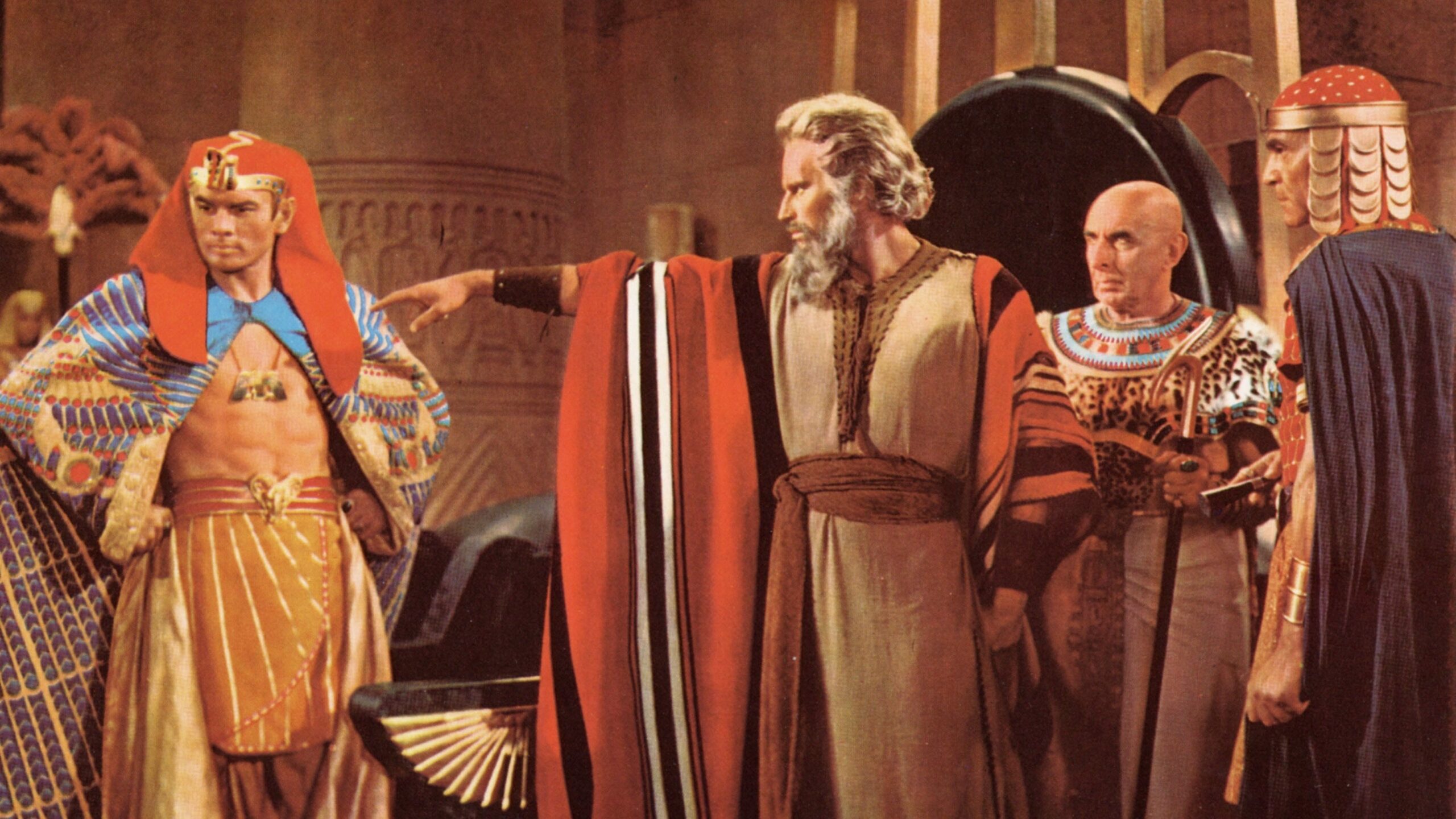Recognizing Jesus in the Shadowlands of the Old Testament

The Ten Commandments, image courtesy of Paramount Pictures; from Moviestillsdb.com.
Disclosure: This post may contain affiliate links, meaning Beautiful Christian Life LLC may get a commission if you decide to make a purchase through its links, at no cost to you.
In the wake of the death and resurrection of Christ, a number of Jesus’ disciples failed to receive word that their Lord and Savior had risen from the dead. Under the impression that Jesus was dead in his tomb, the disciples walked on the road to Emmaus until a visitor joined them along the way:
That very day two of them were going to a village named Emmaus, about seven miles from Jerusalem, and they were talking with each other about all these things that had happened. While they were talking and discussing together, Jesus himself drew near and went with them. But their eyes were kept from recognizing him. And he said to them, “What is this conversation that you are holding with each other as you walk?” (Luke 24:13-17)
This visitor eventually revealed himself as the risen Messiah, and Jesus began to teach them about his ministry from “the Law of Moses and the Prophets and the Psalms” (Luke 24:44). In other words, Jesus taught his disciples exclusively from the Old Testament.
In fact, the phrase that Luke uses, the Law, Prophets, and Psalms, refers to the three major divisions of the Old Testament. Another way of stating Christ’s point is, “The whole Old Testament points to me—Jesus!” If the Old Testament is about Jesus, then how does this affect the way we read it?
The Old Testament isn’t merely about morals, ethics, or leadership.
All too often people read the Old Testament as if its narratives set forth principles merely about morals, ethics, or leadership. Moses is an example for leadership in how he led a rebellious people through the wilderness—these “life lessons” can then be applied to a host of workplace conflicts.
The godly Old Testament saints are an example of how Christians should live their lives, and the wicked people in the Old Testament are examples of how we should avoid sin. When Potiphar’s wife made sexual advances towards Joseph, his swift flight is a good moral example of how we should flee sexual immorality.
The Bible definitely discusses questions of morals and ethics, but correctly connecting Old Testament passages to Christ is vital to a proper application of the aforementioned passages. I very much doubt that when Jesus was on the road to Emmaus he would have appealed to Moses merely as an example of a good leader or to Joseph only as a paradigm of sexual purity.
“The Law of Moses and the Prophets and the Psalms” are about Jesus.
Jesus was not in the least bit shy about claiming that the Law, the first five books of the Bible, the Torah, was about him:
“For if you believed Moses, you would believe me; for he wrote of me.” (John 5:46)
In the case of the relationship between Christ and Moses, the New Testament explains that Moses is a type, or foreshadow, of Jesus, the antitype or reality. This makes the Old Testament—the shadowlands, if you will—the land filled with shadows of Jesus.
The author of Hebrews, for example, explains that Moses was a faithful servant in God’s house but that Jesus is over it as a faithful son (Heb. 3:5-6). Moses interceded on behalf of Israel when God indicated that he would destroy them (Exod. 32), but his intercession points forward to Christ, whose intercessory work truly removes sin and imputes righteousness to the people of God. Moses points to the person and work of Christ, not merely to an example of good leadership.
We find several “types” of Christ in the Old Testament.
Joseph was also a type of Christ, in that he was brought low and entered a state of humiliation and eventually ascended to a state of glory where he ruled at the right hand of Pharaoh. Joseph’s life and his righteousness is typical of Christ’s righteousness.
Yes, Joseph models the righteousness that Christians should exhibit, but the only way we can manifest this righteousness is through faith in Christ. Joseph, therefore, is not merely an example of piety and godliness but is first and foremost a type of Christ, the one through whom believers receive the ability to manifest godly conduct.
As you consider the Old Testament, do not press the narratives into the service of application apart from Christ. First consider how Christ is organically connected to the text. How does the New Testament authoritatively explain the particular Old Testament text before you? Through the light of the revelation of the gospel of Christ, you are equipped to recognize clearly Jesus in the shadowlands of the Old Testament.
This article by J. V. Fesko is adapted from “A Pastor’s Reflections: Christ in the Old Testament.” For more helpful content by Dr. Fesko, please visit jvfesko.com.
Related Articles:
- Two Ways Joseph Points Us to Jesus
- What Is the Difference between the Law and the Gospel?
- 10 Words Every Christian Should Know (and Be Able to Explain)
- Jesus Is the True and Faithful Gardener Who Cares for Your Soul
- Christian Basics: What Are the Five “Alones” and Why Do You Need to Know Them?
Recommended:
Death in Adam, Life in Christ: The Doctrine of Imputation (Reformed Exegetical Doctrinal Studies series) by J. V. Fesko

